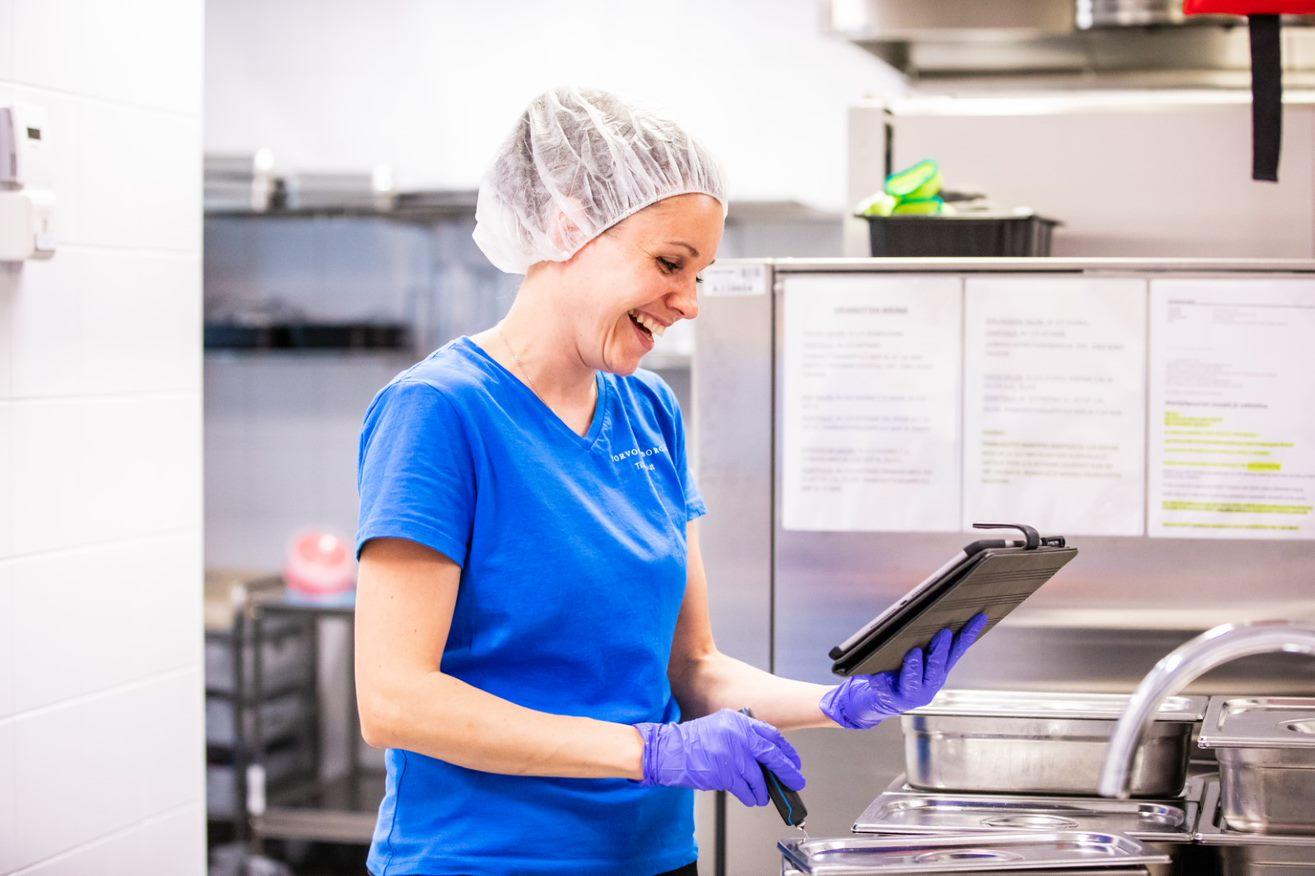Quality and sustainability
Food services have laid out their climate goals for 2024-2030.rnWe use over 70 % domestic ingredients.rnWe continually lower the amount of food waste.rnWe lower the amount of waste, and we use less energy and water in our operations.
Food recommendations are the cornerstone of our work. The steady high quality of our meals is our pride and joy. We listen to your feedback and requests.
Meal planning is based on the quality handbook by a nutritional working group. Our menu rotates every six weeks. We take into account holiday traditions. We also cater to request and theme days.
Production control system Aromi
In 2022 we implemented Aromi, which is a production control system. Aromi supports the planning work of Food Services. For instance, Aromi has all the products, recipes and menus needed for recipe and menu planning, including nutritional values. It also has a built-in ordering and billing function for ingredients. The production control system allow us to optimize our recipes in the Central Kitchen according to order sizes. This way we can minimize food loss in preparation. Ingredients are ordered according to the needs of the customers, which allows us to minimize purchase waste. Our procurements are centralized. One vehicle delivers all our goods, and we use very few other deliveries. This minimized truck traffic to the delivery points.
Porvoo Food Services are a pioneer in climate work
The central kitchen’s method of cold preparing the food is the most ecological cooking way by far. The food is prepared cold at the central kitchen, using high-quality ingredient, and is then sent to the service kitchens where the food is cooked before serving. The food is not cooked and chilled at the central kitchen, and then re-heated at the service kitchens. This cook-chill method is widely used in Finland.
The food is packed into kitchen forms made of cardboard, which minimizes the use of water and cleaning agent, since there is no need to clean the steel forms. The used cardboard forms are used for thermal energy in Kotka.
The central kitchen’s refrigerators use carbon dioxide, which has a GWP (Global Warming Potential) of one, as their refrigerant. The more common refrigerants can have GWP values of up to 3600, meaning that their environmental impacts are thousandfold in relation to carbon dioxide.
The central kitchen has solar panels installed on the roof, and the energy they supply is used effectively. The heat from the apparatus is also used in the process.
Service kitchens have been instructed to work efficiently, for instance in washing the dished and using the apparatus correctly.
The central kitchen and service kitchens do not waste water and washing agent. Instead, we use scrubber dryers to clean the floors. We clean without water.
The food deliveries from the central kitchen to the service kitchens are not tied to any timetables, since the preparation is separate from the eating moment. This way we can manage with a smalle delivery capacity.
Winner of the Luomu SM 2024 (Organic Finnish Championship) competition
Porvoo Food services is the food service provider with the most increased use of organic products in the public sector. Organic ingredients accounted for 16% of all foods used and the share rose by a staggering 15% compared to the previous year 2023.
Luomu SM is a competition for all professional kitchens using organic foods. The Luomu SM competition for professional kitchens has been organised annually since 2014. Porvoo Food services has two stars in the Steps to Organic programme and we are on the step 4. The Steps to Organic is a programme aiming to help professional kitchens to increase their use of organic products as a part of sustainable development actions. The programme includes six steps and at best one may have three stars. There are more than 2,200 different public and private food service providers and restaurants participating in the programme.
One of the goals of the Porvoo City Strategy is to be a city of climate actions. Organic food is one part of it. We regularly use organic milk and organic flake, to some extent organic yogurt, and organic cultured buttermilk, as well as some individual ingredients like tofu. We are about to replace the peas in our pea soup with organic peas. In some years we have bought organic apples and organic meat from local producers. The acquisition of organic products is affected by availability, security of supply, quality, and price.
